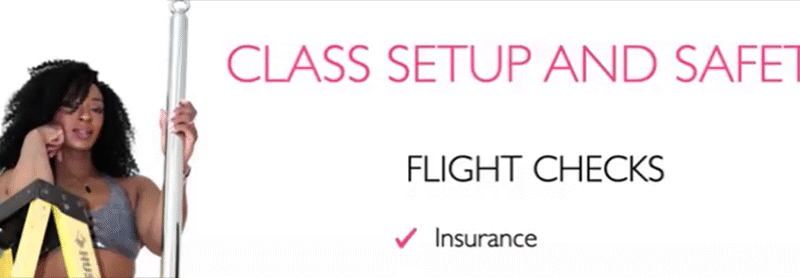Social media marketing may seem confusing and overwhelming sometimes. It is still a great way…

How to price your pole-based service business
Pole-based business services might include (but are not limited to) teaching pole or pole adjacent movement, fitness or mindset coaching for competitors, business coaching for other pole businesses, providing fitness trainer type support for conditioning, physical therapy specific to polers or even sex education consultation services that involve a pole.
Pricing services involves a different methodology than pricing products. There are many factors to consider and while some pricing strategy recommendations involve some “art” or subjectivity, there are also some solid “science” recommendations. We’ll cover both types of factors in this post.
First, start with some research
For a location specific business like a pole studio offering in-person classes, use online search tools like Google and search for similar businesses in your area to find out what they charge for similar services. Many businesses will have pricing listed on their website. If there are no other pole studios in your general area (loosely defined as a realistic travel time to your studio, perhaps an hour or less depending on location), consider looking at boutique fitness studios offering yoga, barre or other similarly structured programs.
For businesses that are not location specific and/or are offered virtually, also use online search tools and additionally search social media for hashtag relevant terms. Some businesses or freelancers/independent contractors may not publish their prices but may offer insight into their pricing model that can also be useful in your research. For instance, do they offer hourly pricing, project-based pricing, membership-based pricing, class based pricing or different pricing packages or tiers?
Knowing your competitors’ pricing is just the start of developing your pricing. You must also consider the costs specific to your business, your business goals, what you want to be paid and what the market will pay your business for the services you provide.
Understand your costs
Direct costs are the costs directly related to the service(s) you sell. The most common direct cost is direct labor, the cost of hiring someone to deliver your service. Other types of direct costs include software directly used for the service (such as video conferencing tool for an online class), licenses to legally conduct your services and any assets or equipment such as poles that you purchase specifically to provide the service.
Overhead costs are general business expenses that keep your business operational. Regardless of whether you have clients or not, you’ll still incur these costs. Overhead costs are costs like rent for your studio, software that runs your business such Quickbooks and any labor that isn’t a direct cost to providing your service to your customer such as hiring an accountant, a marketing person or other.
If you have different services, you will need to understand the different direct costs for every service.
Understand how costs impact your service price
The price for your service must cover your direct costs to provide the service at the time of service and any overhead costs to keep your business in business.
Your overhead percentage is the percentage of money from all sales that goes towards paying your overhead costs. To calculate your overhead percentage, you need:
- Your annual gross revenue or anticipated revenue
- Your annual operating costs.
The overhead percentage formula is:
Expenses / Gross Sales = X
X * 100 = Overhead Percentage
This number will give you how much of your sales go towards paying for the overhead costs of your business.
What rate do you want to be paid?
Ask yourself, how much do you want to get paid for the service you provide. This is not your final price to your customer. That final pricing number will include your direct costs and overhead percentage as well as how much you want to be paid.
Your rate reflects the value of your time. When determining your rate, consider:
- Length of time in the industry/providing the service. Generally, the longer you’ve been in your industry, the higher your rate.
- Any specialized skills
- Licenses, certifications, or training
- Consideration for if your service saves your clients time or money
- Competition pricing, if known.
Now think about how long the service actually takes you to provide. If you are a pole teacher, the service to teach a pole class may be 60 or 90 minutes to conduct but also include time to lesson plan the class. If you offer a replay of a virtual class, include time to upload and/or modify a video and send that information out to your students. Be realistic about the number of hours the service will take you in total.
Put it all together to determine your price
There are many ways to price your service(s), we’ll start with easiest and move towards more complicated.
Fixed rate price
This type of pricing would most directly apply to a service like teaching a pole class.
Add your direct costs to the rate you want to be paid: Direct Costs + Rate = Baseline Fixed Price
Then multiply your baseline price by your overhead percentage: Baseline Fixed Price x Overhead Percentage = Overhead Contribution
Finally, add your overhead contribution to your baseline price: Overhead Contribution + Baseline Fixed Price = Final Fixed Price
In a pole teaching situation, you may additionally need to take the final fixed price and divide by number of students you can safely teach in one class.
Hourly rate pricing
This type of pricing would most directly apply to a service like providing social media support for a pole studio.
Determine the total hours you plan on working for the year. These are your possible billable hours. Subtract all non-billable time, time you need to devote to working on your business doing things you cannot bill a client for such as invoicing or marketing your services, from your total hours. The number of hours you devote to non-billable tasks depends on your business.
Divide any expenses (direct and overhead) by your billable hours to find out how much you need to charge per hour to cover your expenses for the hours you are willing to work in a year. Hourly Rate to Break Even: Total Annual Costs / (Billable Hours – Non-billable Hours)
Now, add in a profit margin. Start small with a margin of 10-20% and increase as needed. Multiply the profit margin by the hourly rate to break event number to determine your hourly pricing. Hourly Service Pricing = Hourly Rate to Break Even X Profit Margin.
Project based pricing
It may be more advantageous to you to charge clients by the project rather than by the hour. To come up with a per-project rate, use could your hourly rate and estimate how long it will take to perform the service or you could charge a fixed price for each service that is not based on an estimated number of hours but may reflect the value you provide.
If you decide to use your hourly rate to determine your per-project rate, multiply the time you think it’ll take you by your hourly rate. To charge a fixed price for each service, factor in your costs, the market, your value, time and your desired profit margin before coming up with the rate.
Retainer based or Membership based
Retainer based pricing provides clients the security knowing that they can access your services whenever they need or want to and is usually a flat fee charged monthly. It also provides you the security knowing that you have a steadier income stream. Price in a similar way to project-based pricing and make sure to include any contractual stipulations on what happens to any time or services that aren’t used within the allotted time. Do they roll over to the next pay period? What happens if the level of time or services is exceeded?
Adjust your price as needed
Finally, after all the math is done, now you apply the “art” of pricing and adjust your prices to meet the needs of the market and of yourself. This should include what you feel people will pay and it should also consider if your prices are sustainable for your personal situation. Pricing to include profit enables you to grow your business. Pricing simply to break even will not.
General types of pricing strategies to consider
Depending on what stage your business is in such as startup, growth, maintenance or ending a business, you pay employee different types of pricing strategies.
According to Marketing Teacher, these are some of the most common pricing strategies. Employ these strategies after you have determined your base pricing.
- Penetration pricing involves setting a price artificially low to gain the market share and then raising the price.
- Economy pricing means keeping all costs to a minimum to give customers the best price.
- Price skimming is setting a higher price because you have some sort of competitive advantage.
- Psychological pricing is designed to make customers respond on an emotional rather than rational basis.
- Product line pricing means setting progressively high prices for a variety of products.
- Optional product pricing involves getting customers to upgrade and spend more on other products or services that you offer as an optional add-on.
Pricing your pole-based business services well can have a huge impact on the long-term success of your business and its sustainability. Review your pricing regularly and consider increasing pricing for services as things change in your business. Things that could change include rising direct or indirect costs, competitors entering or leaving the market, getting a new and valuable certification or a personal life change such as a new baby or sick relative that will take more of your time. Keep your price changes rooted in “science” but with enough flexible “art” to reflect the needs of the market and of yourself.



